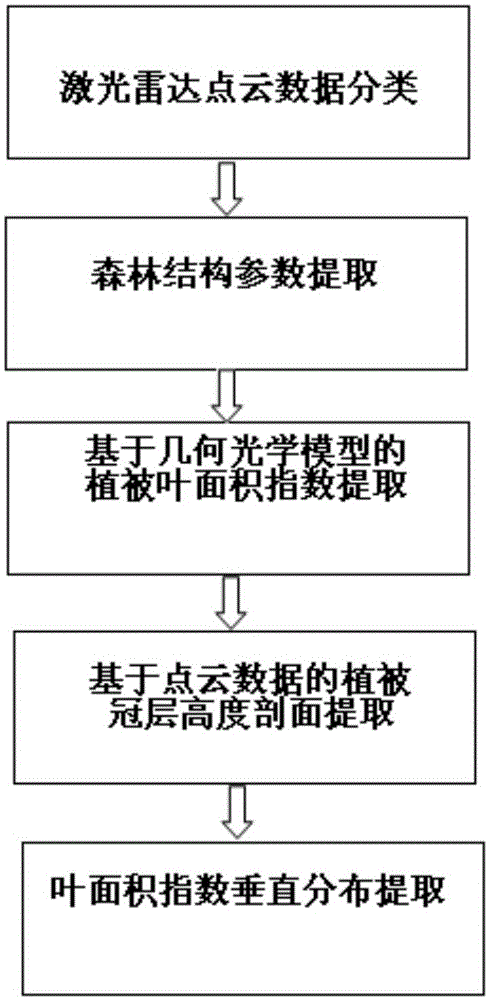Method of Extracting Vertical Distribution of Leaf Area Based on Hyperspectral and LiDAR
A lidar and hyperspectral technology, applied in the measurement of color/spectral characteristics, using optical devices, measuring devices, etc., can solve problems such as difficulty, unsuitability for long-term monitoring of leaf area, damage to the canopy and time-consuming acquisition, etc. Effects of precise parameter input
- Summary
- Abstract
- Description
- Claims
- Application Information
AI Technical Summary
Problems solved by technology
Method used
Image
Examples
Embodiment Construction
[0031] The accompanying drawings disclose, without limitation, the structural schematic diagrams of the preferred embodiments involved in the present invention; the technical solution of the present invention will be described in detail below in conjunction with the accompanying drawings.
[0032] The airborne lidar used in the acquisition of remote sensing data is the Litemapper-5600 instrument produced by the German IGI company. The lidar data was obtained at a height of about 700-800m above the ground in the research area, and the data density was 0.36-1.6 / m 2 points. The hyperspectral data is Hyperion data, and the ground data is leaf area index data measured by LAI2000.
[0033] Such as figure 1 As shown, the specific implementation steps are:
[0034] Step 1. Classify the ground points and vegetation points on the airborne lidar point cloud data, and extract the vegetation structure parameters in the corresponding hyperspectral pixels, including parameters such as tree...
PUM
 Login to View More
Login to View More Abstract
Description
Claims
Application Information
 Login to View More
Login to View More - R&D
- Intellectual Property
- Life Sciences
- Materials
- Tech Scout
- Unparalleled Data Quality
- Higher Quality Content
- 60% Fewer Hallucinations
Browse by: Latest US Patents, China's latest patents, Technical Efficacy Thesaurus, Application Domain, Technology Topic, Popular Technical Reports.
© 2025 PatSnap. All rights reserved.Legal|Privacy policy|Modern Slavery Act Transparency Statement|Sitemap|About US| Contact US: help@patsnap.com



